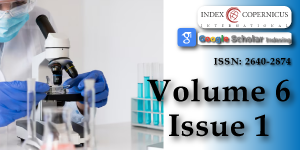The identification of the true nature of pseudofungus structures as polyurethane catheter fragments
Main Article Content
Abstract
Pseudofungus structures in lymph node tissues have been reported on multiple occasions. Despite a variety of investigative tests including histochemical special stains and energy dispersive spectral analysis, the underlying nature and origin of these pseudofungus structures has never been clearly defined. The most common hypothesis suggests that they represent collagen fibers that become coated with iron and calcium. Herein, evidence is given that the pseudofungus structures identified in the lymph node tissues represent fragments of polyurethane catheters. The evidence includes both a comparison of these pseudofungus structures to fragments of polyurethane well documented in the literature and a comparison of polyurethane catheter scrapings to the pseudofungus structures identified in the literature. In both of these comparisons, the morphology of the polyurethane fragments are identical to the pseudofungus structures. This is the first definitive report identifying polyurethane catheter fragments as representing the true nature and etiology of pseudofungus structures in lymph node tissues.
Article Details
Copyright (c) 2022 Lombard CM.

This work is licensed under a Creative Commons Attribution 4.0 International License.
Connelly J, Cartwright J. Pseudofungi in a lymph node: A case report with energy dispersive x-ray elemental analysis. Arch Pathol Lab Med. 1991; 115: 1166-1168. PubMed: https://pubmed.ncbi.nlm.nih.gov/1747037/
Teague MD, Tham KT. Hyphalike pseudofungus in the lymph node. Arch Pathol Lab Med. 1994; 118: 95-96. PubMed: https://pubmed.ncbi.nlm.nih.gov/8285843/ b
Kim H, Koo JS, Shim H, et al. Pseudofungi associated with a granulomatous response in a lymph node: A case report. The Korean J of Pathol. 2004; 38: 64-67.
Song ES, Kahn AG, Shin KK, Ro JY. Pseudofungi in pericolic lymph nodes. Arch Pathol Lab Med. 2005; 129: e97-e100. PubMed: https://pubmed.ncbi.nlm.nih.gov/15794699/
Singh S, Manivel JC, Pambuccian SE. Pseudofungi: coral shapes and Bamboo sticks in lymph node sinuses. Int J Surg Pathol. 2010; 18: 68-69. PubMed: https://pubmed.ncbi.nlm.nih.gov/19748899/
Lyapichev KA, Agarwal AA, Rosenberg AE, Chapman JR. Pseudofungi: A diagnostic pitfall. Int J Surg Pathol. 2016; 24: 528-531. PubMed: https://pubmed.ncbi.nlm.nih.gov/27106780/
Nigdelioglu R, Biemer J, Pambuccian SE. Liesegang structures and pseudofungi in a cystic renal cell carcinoma. Diagnostic cytopath. 2018; 46: 888-891. PubMed: https://pubmed.ncbi.nlm.nih.gov/30043493/
Bilani N, Elson L, Carlson D, Elimimian EB, Nahleh Z. Pseudofungi in an immunocompromised patient with breast cancer and COVID-19. Hindawi Case Reports in Medicine. 2020.
Lau S, Williams D. PAS positive pseudofungi: a diagnostic pitfall. Pathology. 2021; 53: 542-543. PubMed: https://pubmed.ncbi.nlm.nih.gov/33218738/
Zhou L, Pittmann W. Distributions organophosphate flame retardants (OPFRs) in 3 dust size fractions from homes and building material markets. Environmen Pollut. 2019; 245: 343-352. PubMed: https://pubmed.ncbi.nlm.nih.gov/30448504/





